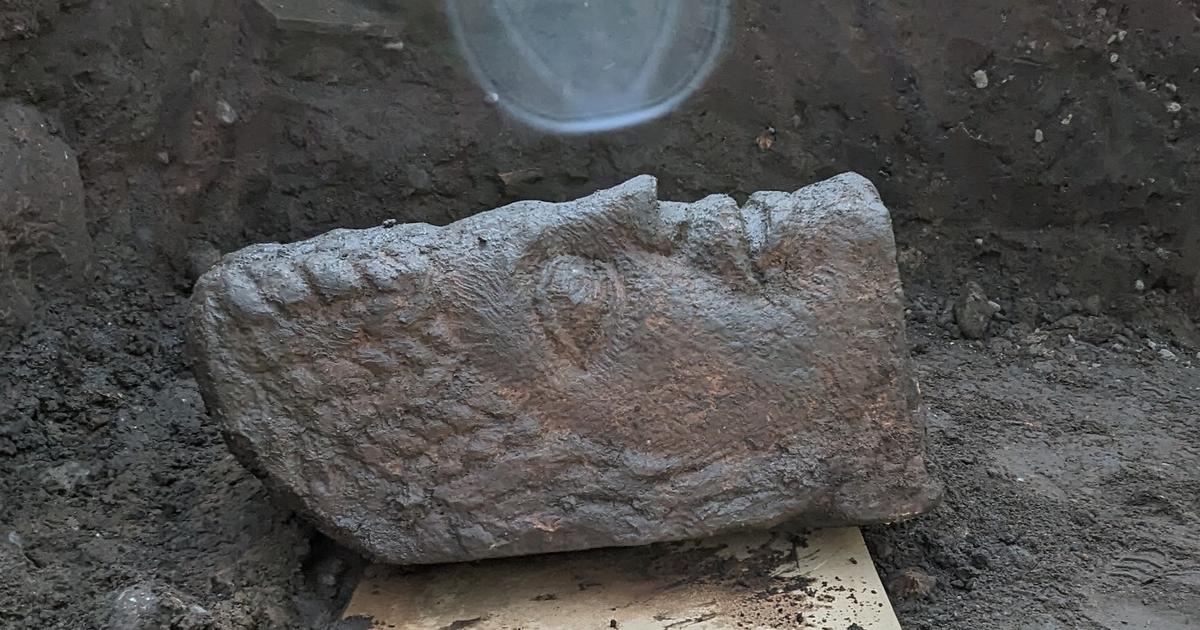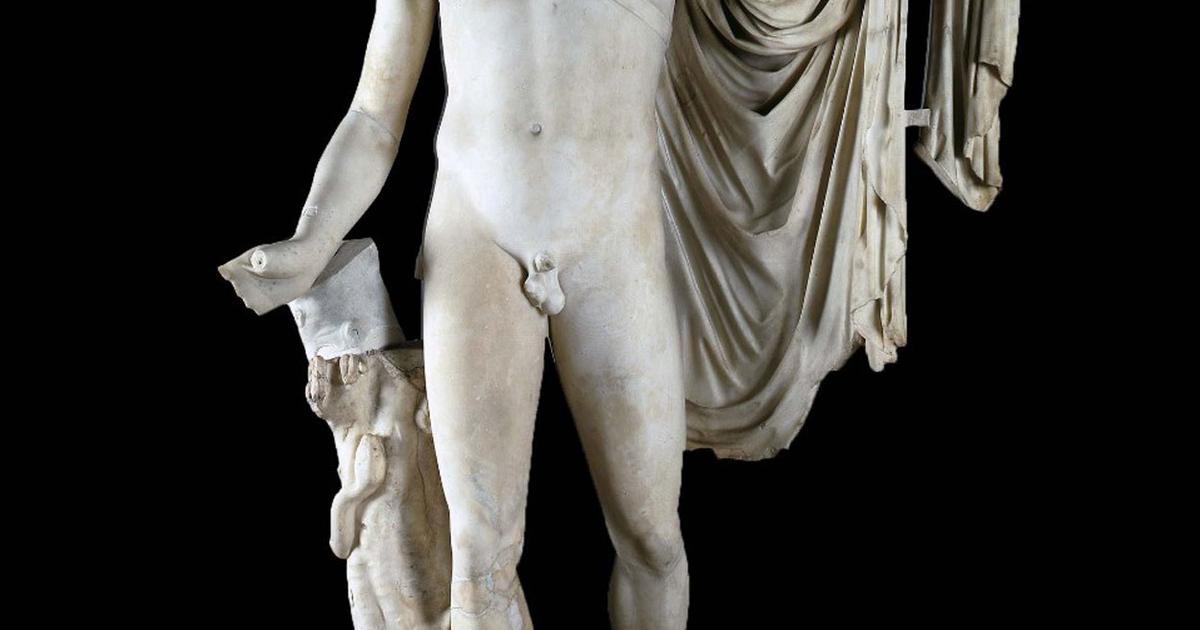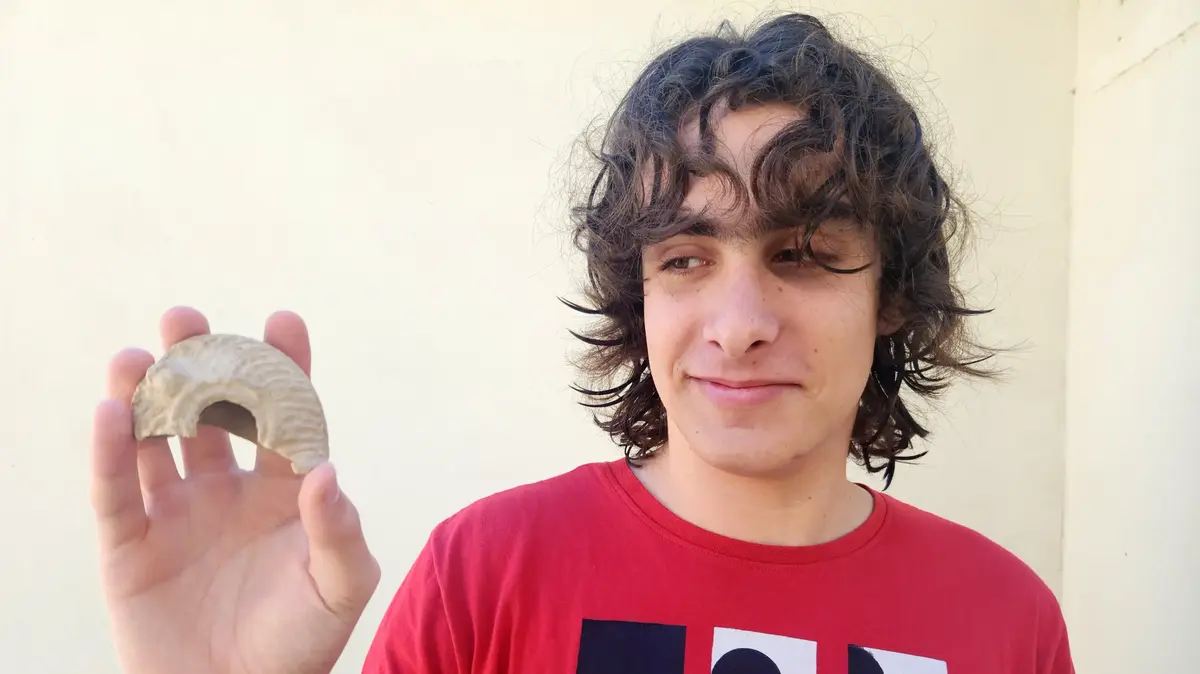Roman antiquity spent a head, or even two, in the countryside of Cumberland, in the northwest of England. Two monumental carved faces were exhumed Tuesday from the depths of the cricket ground in the town of Carlisle, which, under its former name of Luguvalium, once marked the western base of Hadrian's Wall. With a dimension of about 60 centimeters, the two sandstone remains must have belonged to statues 3.5 to 4.5 meters high that inhabited an ancient thermal building being excavated.
"These are the first sculptures discovered at the site," archaeologist Frank Giecco said in a statement. In charge of the operation, the researcher stressed that these fragments of statues correspond to a "discovery that one does not make once in a lifetime". The dimensions of the two heads also make it possible to "reassess the importance of these public baths", added Frank Giecco since the presence of monumental sculptures adds a new character to the building. "It's a discovery as priceless as it is unique," he told the BBC.
" READ ALSO In Pompeii, two new victims of Vesuvius discovered in the House of chaste lovers
The sculptures, admittedly, are hardly comparable to the Greek masterpieces of Polykletos or Phidias, as well as to the best productions of their Roman epigones. From a rough-looking invoice, the two heads were carved from triangular blocks. They wear an elaborate headdress; The details of their faces have been carefully worked. An impression of majesty emerges from these remains, despite their crude quality. These heads date from the late second or early third century AD, a chronology related to the style and archaeological context of the Carlisle baths, built in the time of Emperor Septimius Severus (193-211).
"It's a provincial-type work," Frank Giecco wrote for the Daily Mail. It has nothing like the beautiful marble statues preserved today in the Vatican or elsewhere, but it is nevertheless remarkable for Carlisle and for the northern border of the Empire. Asked by the British daily, the Roman art historian Martin Henig, of the University of Oxford, was delighted with the discovery of these two pieces "among the most remarkable discovered to date in the north of Great Britain".
See alsoThe first love kisses described 4500 years ago in Mesopotamia
One-on-one with history
The identification of these heads is also not certain. One could represent Fortuna, the Roman goddess of luck and chance. A sculpture with a similar hairstyle, discovered at the Antonine Wall, further north, is known to archaeologists. Another attribution evokes the trail of the imperial couple formed by Septimius Severus and his wife Julia Domna.
Several volunteers accompany the work of archaeologists on the Carlisle excavation site. The monumental heads were discovered by an American retiree. Anna Giecco
The rest of the statues have not yet been found. According to Frank Giecco, this could be the consequence of reusing the blocks of the building and discarding the least recyclable parts - such as these two heads "bizarrely shaped", in the words of the researcher.
" READ ALSO In Norway, a girl discovers a dagger of the late Neolithic in his schoolyard
Archaeologists from private operator Wardell Armstrong, under contract to the Cumberland Council, made the discovery on the second day of their new excavation campaign. In January, a previous operation was marked by the discovery of more than thirty intaglio gems, decorated with images of Venus and satyrs.
Since 2021, the archaeological site has been excavating Roman baths discovered in May 2017 on the grounds of the Carlisle Cricket Club. The enormous complex is located on the edge of a Roman road that served the fortified border of the Roman Empire. Carlisle-Luguvalium was, in the second century, one of the most important Roman forts of Hadrian's Wall. Archaeological research is expected to continue at the Cricket Club thermal baths until next year.



/cloudfront-eu-central-1.images.arcpublishing.com/prisa/SKTQKMBVVFC57N2EWM4CECDMPA.jpg)




